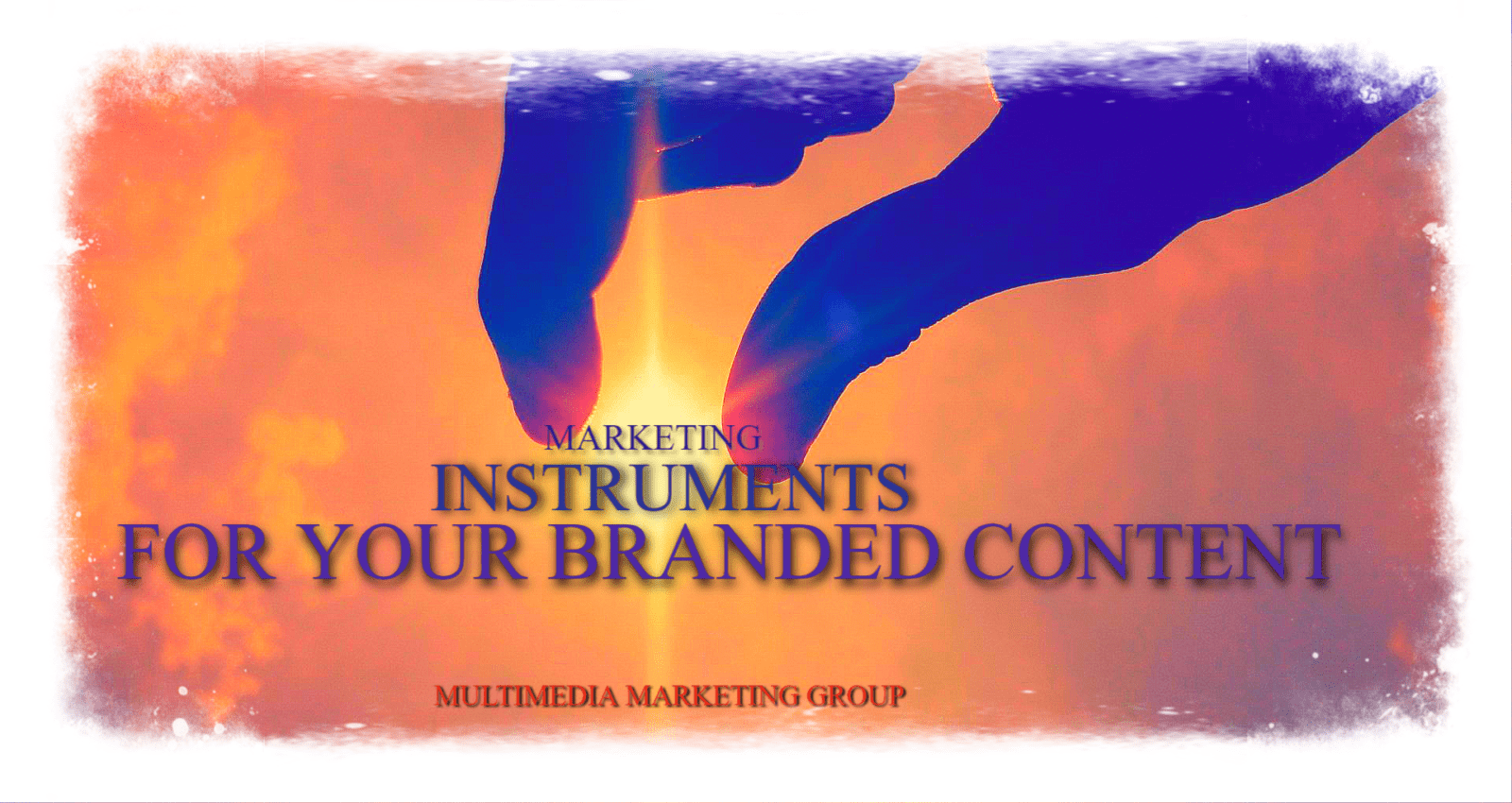
Explainer Journalism
LEARNING TO ADAPT TO EVERYTHING
A short Preamble to this White Paper
It seems the world of business is full of acronyms. Most recently, another peculiar new acronym is suddenly everywhere in media and on the lips of our colleagues. WFH, otherwise recognized as Work from Home. Not to be confounded with WTF, Work from Home is a business model that seemed so very far away to most people in the not so distant past. For many of us, the daily commute to our jobs has now been replaced with virtual meetings and Dropbox.
This pandemic has most businesses learning to adapt to everything, from our homes, and the old workspaces at the office, our communication platforms, creating other new forms of media and marketing. WFH has changed our interaction with informational and social media online resources, and above all else, our employee’s general wellbeing and their sense of self through effective communication.
This two-part white paper will help guide you through this uncharted territory and will provide some timely tips on how to create new ways to market your services and products. We hope it will support and motivate you to look at your business in a new light.
Finally, the white paper will also traverse a historical perspective, and at the same time, you will learn how this medium of tools has adapted to fit the needs of today’s marketplace. Enjoy. J.M.Arco
This two-part series will also help you navigate the growing need for marketing materials in these recent times and help understand the communication hardships associated with the coronavirus pandemic.
PART ONE
COLLATERAL MATERIALS ARE NO LONGER LIMITED TO JUST PRINT
MARKETING INSTRUMENTS

Companies and organizations have used marketing collateral to inform potential prospects, customers, or users about their products or services. This new expression of creative material called collateral now refers to both offline and online media. Print and non-print alike. These new collateral tools help you weave a compelling narrative universe across multiple platforms and, at the same time, helps meet today’s audience emotional demand in its need for informational content.
For example, marketing collateral now incorporates interactive web-based content. Handily done, this new style collateral is incorporating Near-Field Communication (NFC), which allows you to embed a chip in your mail piece. The chip will launch communication content on your customer or prospect’s mobile device when they place it near the chip.
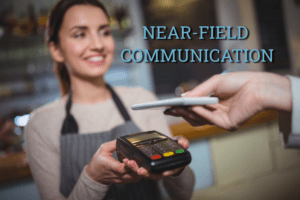 Perhaps you already know about Near-Field Communication because it is the same technology that lets customers pay you and each other with their cell phones. There are numerous ways you can utilize NFC technology in your direct mail campaign. Including a personalized message, video, directing the consumer to a specific landing webpage, and even allowing your customer to automatically autodial by scanning the NFC chip.
Perhaps you already know about Near-Field Communication because it is the same technology that lets customers pay you and each other with their cell phones. There are numerous ways you can utilize NFC technology in your direct mail campaign. Including a personalized message, video, directing the consumer to a specific landing webpage, and even allowing your customer to automatically autodial by scanning the NFC chip.
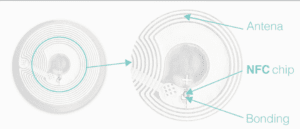
NFC has the potential to accelerate your collateral material. Today, by including the NFC chip, it will allow you immediate mobile conversions.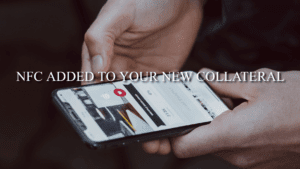
The user does not even need to open up their phone. The information transfers automatically, with no app download necessary.
These marketing instruments must be integrated into all the other elements of your marketing communication plan to be effective and, at the same time, provide a return on your investment.
A LOOK BACK TO MID-CENTURY MODERN GRAPHIC DESIGN
To understand the future of 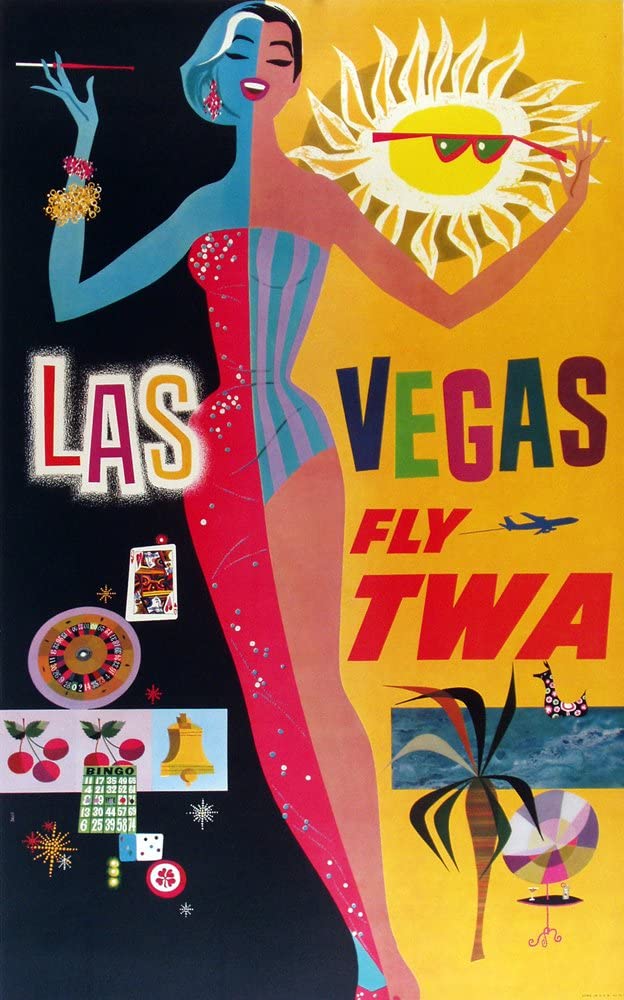 collateral materials and where it is going, we need to look at the past briefly.
collateral materials and where it is going, we need to look at the past briefly.
Historically, the term “collateral” expressly referred to conventional print support. During the golden age of the ‘Mad Men’ era, collateral designers would do significant amounts of design work to create custom client collateral designs. Encompassing everything from LP record covers and giant posters, to one-of-a-kind typography and print advertisements, Mid-Century Graphic Design was and is a stylish guide to the hugely popular infographic style today. With their eye-popping color palettes, experimental type, and images buzzing with kinetic energy, the mid-century graphic design remains innovative and treasured.
We see interpretive versions today, everywhere we look.
THE HEIGHT OF AMERICAN CONSUMERISM
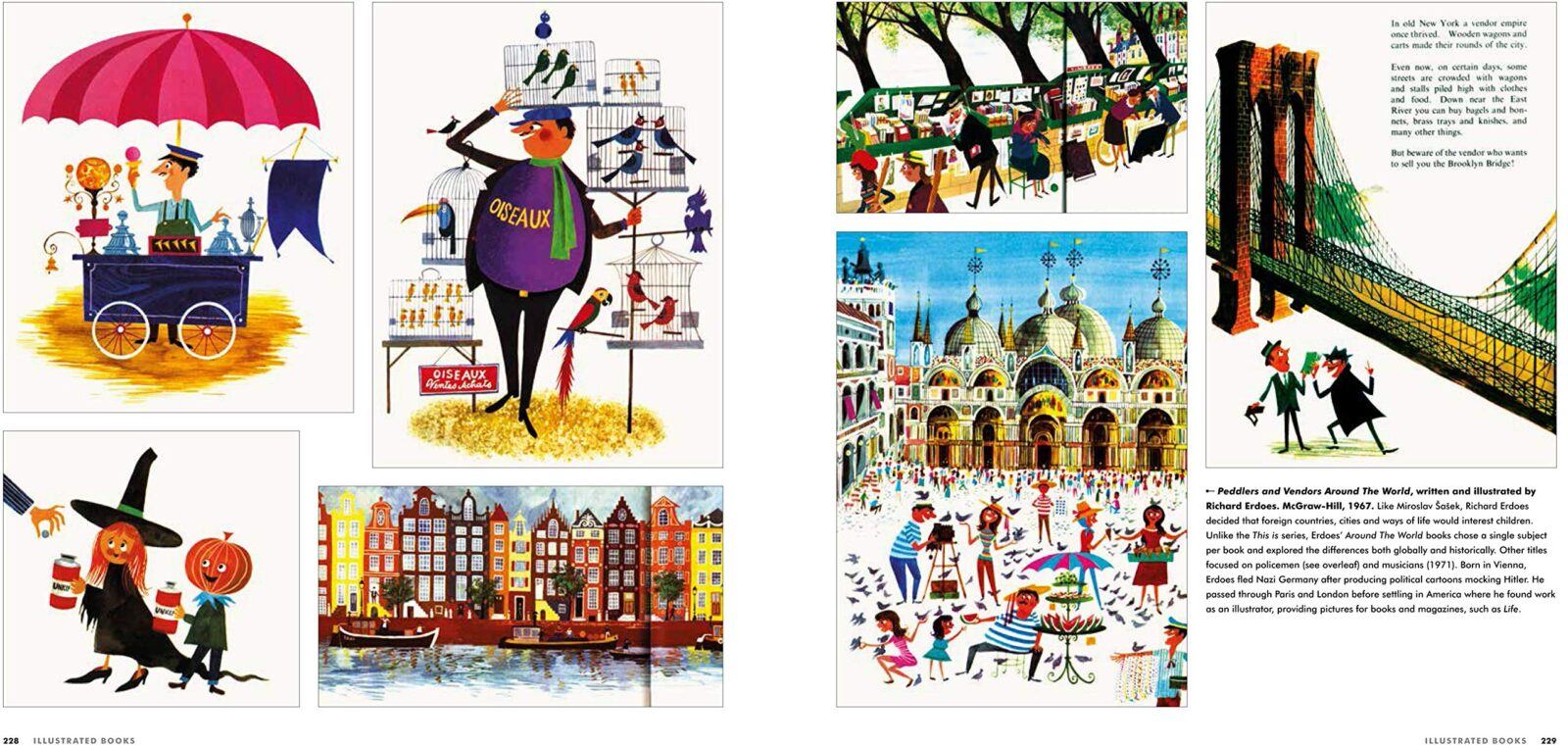 Theo Inglis is a design writer and graphic designer who specializes in postwar design. His book, MID-CENTURY MODERN GRAPHIC DESIGN, covers examples of advertising, magazine and record covers, textiles, travel posters, and children’s books. The text highlights the development of the design style globally and is an essential insight to understand the era of modern design.
Theo Inglis is a design writer and graphic designer who specializes in postwar design. His book, MID-CENTURY MODERN GRAPHIC DESIGN, covers examples of advertising, magazine and record covers, textiles, travel posters, and children’s books. The text highlights the development of the design style globally and is an essential insight to understand the era of modern design.
The book includes a compendium of illustrations taken from about the period of 1948 through 1966. He currently runs the Tumblr account Midcenturymoderndesign, which has over 30,000 followers.
From the height of American consumerism in the 1950s, as concerns about the Cold War gave way to the carefree booze-and-cigarettes capitalism of the Mad Men era, these advertising campaigns portray a captivating portrait of the 1950s and the early ’60s in our society. However, one caveat worth noting here and certainly would not the ‘pass muster’ today, is that many businesses carelessly flooded our culture with dangerous misinformation. Companies in the 50s promoted everything and anything frequently with a devil may care attitude.
MODERN DESIGN INFOGRAPHICS
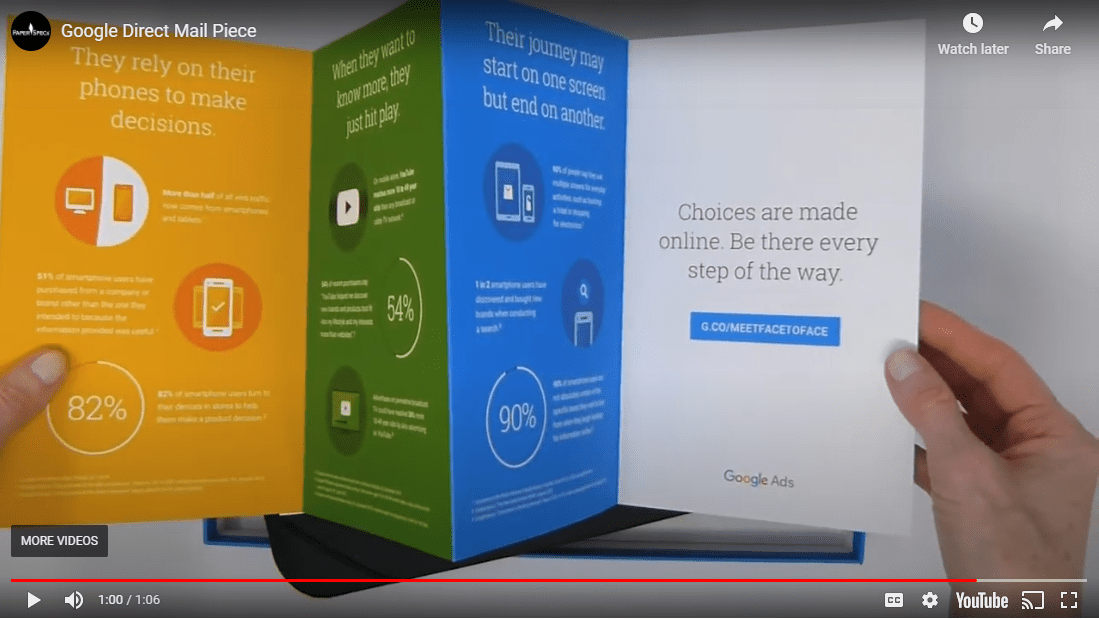 Today’s business infographics work tirelessly to accurately inform, educate, and empower the viewer with charts, graphs, and modern design. While these infographics may be a throwback to modern mid-century design, they certainly do not misinform as part of their communication and marketing mission.
Today’s business infographics work tirelessly to accurately inform, educate, and empower the viewer with charts, graphs, and modern design. While these infographics may be a throwback to modern mid-century design, they certainly do not misinform as part of their communication and marketing mission.
An example of high use of MODERN DESIGN infographics for direct mail is the Google Direct Mail Piece illustrated here (see video link below) to promote their services. Given the omnipresence of Google’s products for all of us in our routines online, their Maps, Chrome, YouTube, Google Search, it is challenging to remember that the search engine giant is first and foremost an advertising company! Google controls over 40 percent of the US digital advertising market. Google’s marketing is centered around targeted user behavior.
FOUR SUCCINCT IDEAS
Google has a simple, pragmatic advertising strategy distilled to four succinct ideas:
- Talk Human to Human
- Look for ideas everywhere
- Act like an owner
- Never settle
According to Google, “It starts with thinking about one real person – understanding that person’s pain points, their story, their why, and try to connect with them on a human to human level.”
In the direct mail piece, there was a personalized letter enclosed, the message secured with a loop at the back of the bellyband. The letter itself invited the prospect to get on a live video call with a Google specialist who will build a customized marketing plan for you. And yes, a promise of receiving an HP Chromebook 11 laptop for you to use. Nice!
MODERN INFOGRAPHIC USE
Another integrated  communication and community relations case example for modern Infographic use is from one of MMG, clients, the Rockford Housing Authority.
communication and community relations case example for modern Infographic use is from one of MMG, clients, the Rockford Housing Authority.
We used this Infographic style to incorporate print and non-print on multiple Social media platforms, News posts, Blogs, Email blasts, and printed posters.
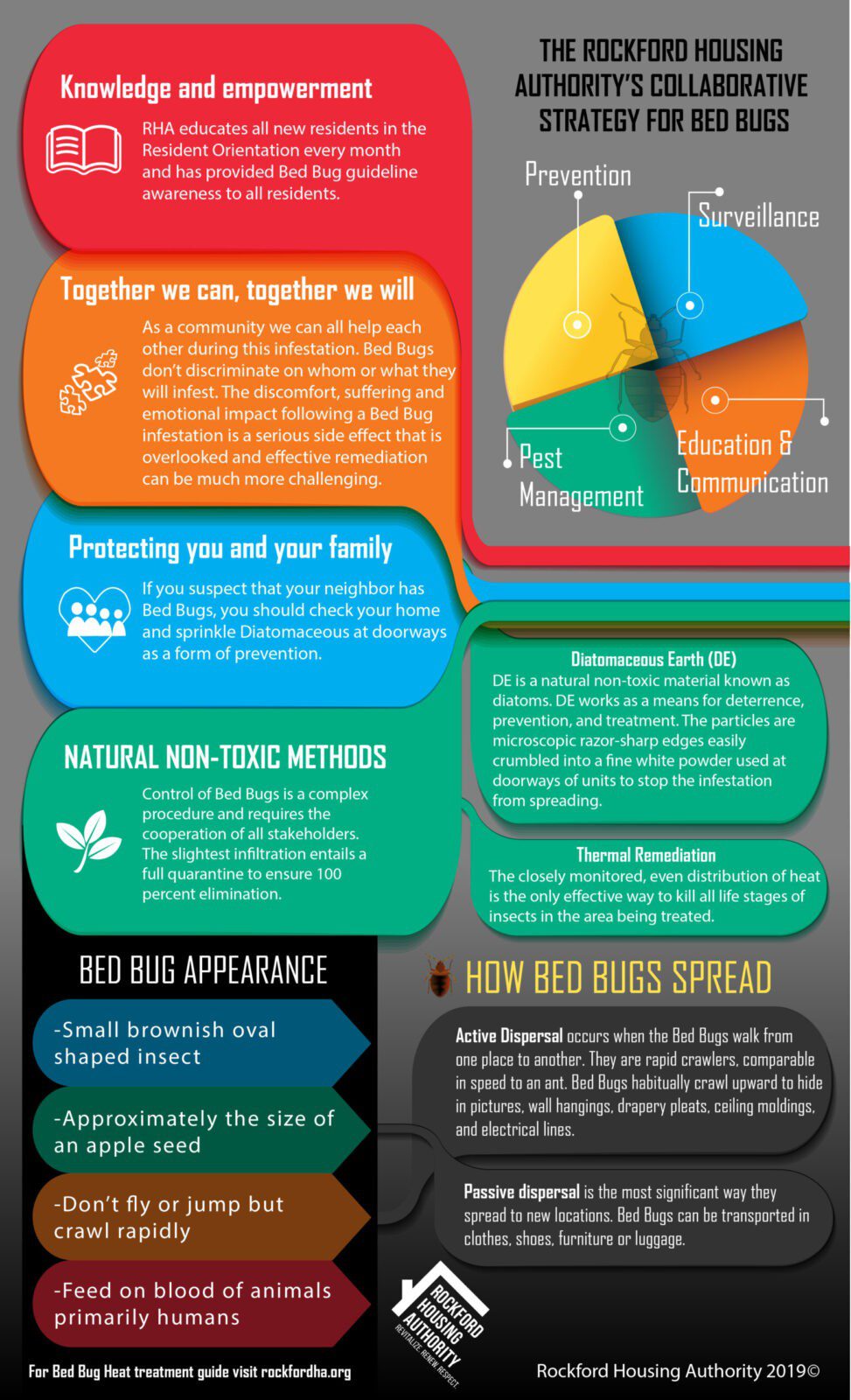 Today, it is also being called an epidemic spreading in a pandemic across the United States. The culprit is biting its way through our homes, hospitals, dorm rooms, movie theaters, hotels, airports, armed forces barracks, nursing homes, furniture rental stores, moving vans, and apartments. This invader has several names and a massive resurgence of Cimex lectularius plagues society. However, the most common name today and the most familiar to all of us is ‘Bed Bugs.’
Today, it is also being called an epidemic spreading in a pandemic across the United States. The culprit is biting its way through our homes, hospitals, dorm rooms, movie theaters, hotels, airports, armed forces barracks, nursing homes, furniture rental stores, moving vans, and apartments. This invader has several names and a massive resurgence of Cimex lectularius plagues society. However, the most common name today and the most familiar to all of us is ‘Bed Bugs.’
The communication objective of the Bed Bug infographic was to be able to digest the information through the use of visual data, the graphical chart, and the current statistics of Bed Bugs. We felt that there was a need to combine the written word with the visual elements to pack content into a small space.
THE HUMAN VISUAL SYSTEM
We all have learned that users pay attention to information-carrying images, as in the case of the Bud Bug Infographic. Generally speaking, infographics are composed of a few different attributes., they tell a great story, and they
are content targeted and very easy to understand. We used graphic design to enhance the human visual system’s ability to see patterns and trends and to simplify complicated content.
AN INTERNET STAPLE
Modern infographics have emerged as an Internet staple on all social media platforms no matter where you traverse. As in the case of media platforms, you can provide content to a broad audience or target one particular audience over another. Numerous studies indicate infographics are also involved in forming visual memories, whereby reinforcing the process of memory recall as well, and at the same time provide comprehension and draw conclusions and insights. This recall value boates well for your Storybrand because your organization is aligned with the infographic content. It was shown several decades ago that people could remember more than 2,000 pictures with at least 90% accuracy in recognition tests over several days, even with short presentation times during learning of content.
CONVEY YOUR BRAND VALUES
All collateral has an aesthetic 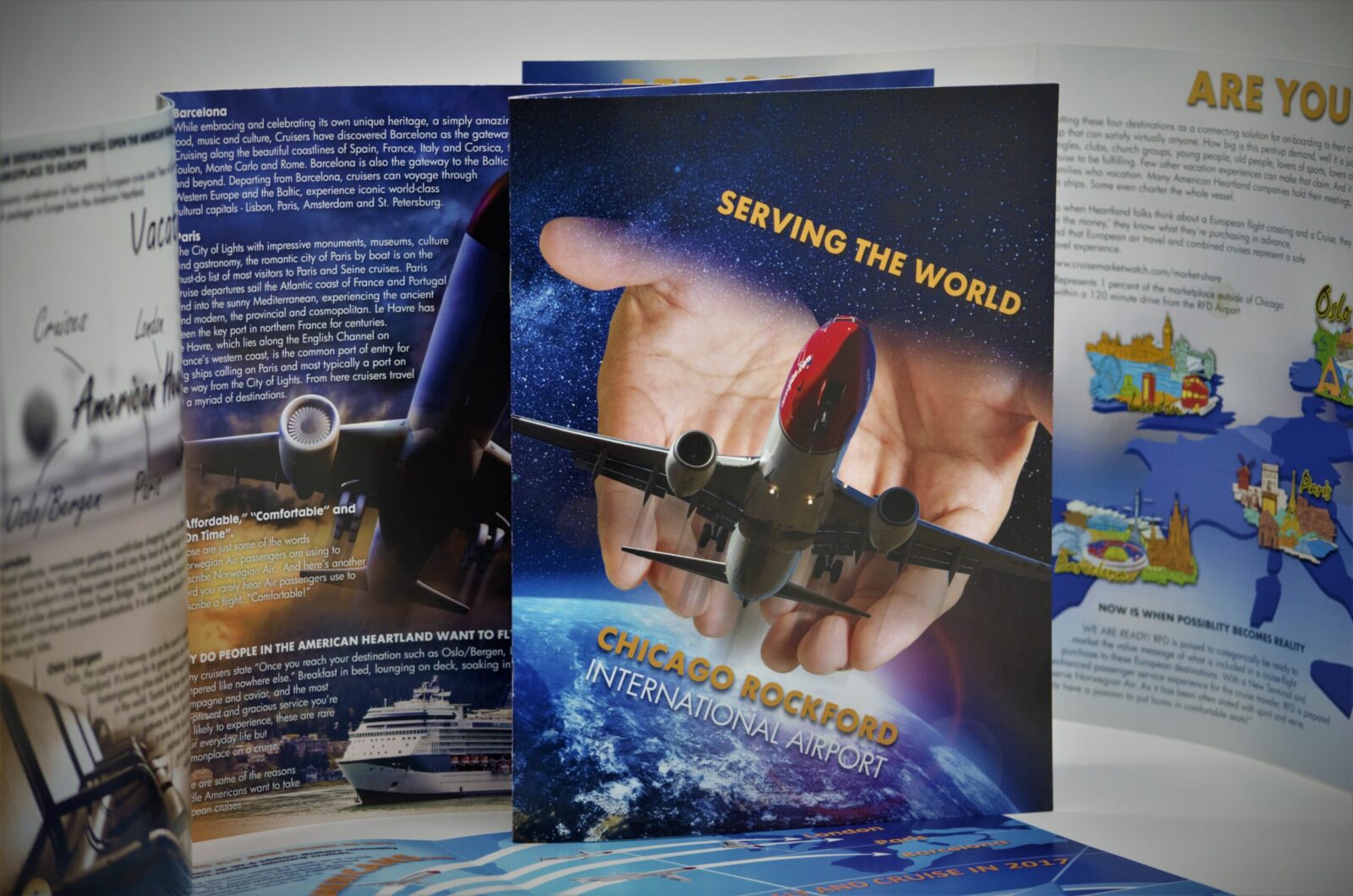 way about them. We can even say that graphic design for all collateral is an art that has a particular purpose and objective. Overall, collateral materials serve to convey your ideas in a way that is not only effective but also beautiful. Collateral material makes it easier for your customers to use your website, attracts the right people to your brand, and conveys your brand values in a matter of seconds.
way about them. We can even say that graphic design for all collateral is an art that has a particular purpose and objective. Overall, collateral materials serve to convey your ideas in a way that is not only effective but also beautiful. Collateral material makes it easier for your customers to use your website, attracts the right people to your brand, and conveys your brand values in a matter of seconds.
VISUAL SYNTAX
There is a visual language or visual syntax to collateral. It has a tone of voice, imagery, and the use of color. These have all been carefully crafted so that it reaches you, the reader, or the viewer, in a particular order. The goal of collateral is effective communication of ideas, and while doing so, the design must take into account the needs of the audience, social and cultural trends, and ethnicity.
To learn more and see the MMG’s new marketing collateral website page, visit us at
COLLATERAL MATERIALS ARE NO LONGER LIMITED TO JUST PRINT
Link: https://vimeo.com/457536054/914d578bfc
LINKS & RESOURCES:
*MID-CENTURY MODERN GRAPHIC DESIGN
Theo Inglis – Writer/Designer https://www.pavilionbooks.com/contributor/theo-inglis/
*Packed with hundreds of color illustrations, this stunning volume features work from a wide selection of international and influential artists: Charles and Ray Eames, Paul Rand, Alvin Lustig, Elaine Lustig, Alexey Brodovitch, Jim Flora, Herb Lubalin, Olle Eksell, Miroslav Sasek, and more.
*Google Direct Mail Piece
https://www.youtube.com/watch?time_continue=60&v=qYsF3yCZVq0&feature=emb_logo
*An inside look at Google’s marketing goals and media strategy
Categories
Recent Posts
- Maximize Your Reach: Essential Email Marketing Dos and Don’ts for Success July 9, 2024
- Social Media Day 2024 June 30, 2024
- Navigating the World of Social Media Advertising June 20, 2024
- The Power of Visual Content in Marketing April 8, 2024
- Hip Hopper Alert: Easter Bunny Steals the Show with Sunglasses Stunt March 31, 2024
- The Super Bowl Ads 2024 February 12, 2024
- Serving Our Client’s Social Media Platforms Branded Content February 5, 2024
- Days of Future Past January 31, 2024
- The Art of Blending Human Intuition and Data-Driven Insights January 31, 2024
- Beyond Intuition January 30, 2024
Recent Comments